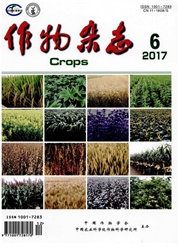

 中文摘要:
中文摘要:
为建立快速准确的检测土壤中辣椒疫霉菌(Phytophthoracapsici Leonian)的实时荧光定量体系的方法,根据辣椒疫霉菌保守的ITS序列设计的特异性荧光实时定量PCR的引物,通过对保守序列构建克隆文库,筛选阳性克隆子,制备用于实时荧光定量体系的标准品,从而构建优良的标准曲线。利用构建的标准曲线和优化的实时荧光定量体系对人工接种含梯度浓度的辣椒疫霉菌的土壤样品进行实时荧光定量PCR检测。辣椒疫霉菌荧光实时定量PCR检测体系的标准曲线的相关系数为R2=0.980,斜率为-3.295,扩增效率为101.1%,线性方程为Y=-3.295X+44.484,标准品的检测下限为1.000×103拷贝,带菌土壤的检测下限为1.236×103拷贝,约为4.887pg基因组DNA。经过土壤样品试验,得出标准曲线相关系数为0.9845,表明所建立的辣椒疫霉菌实时荧光定量PCR检测方法合理有效。
 英文摘要:
英文摘要:
Reliable and sensitive diagnosis of Phytophthora capsici in contaminated soil and pepper plants is of crucial importance for the control of this disease. The aim of this cent quantitative PCR system of P. capsici. Firstly, a pair paper is discussing and constructing the real-time fluores- of species-specific real-time fluorescent quantitative PCR primers was designed based on the internal transcribed spacer (ITS)sequences of P. capsici downloaded from Gene- bank, and by construction clone library method, the fragments of P. capsici was cloned. Secondly, plasmid DNA was extracted from a positive clone screened from the clone library, and the copy number was calculated. Then, the real- time PCR standard samples were got by ten-fold diluted the plasmid DNA. Thirdly, the standard curve was construc- ted using standard samples and the designed specific primers. Fourthly, quantification of soil samples with known concentrations of mycelium P. capsici using constructed standard curve. Results: Using SYBR Green and specific primers for P. capsici, standard samples and standard curve constructed gave rise to 0.980 as linear correlation coef- ficient between DNA concentrations and Ct values, 101.1% as amplification efficiency,and the lineal equation was Y = - 3. 295X + 44. 484. The minimal amount of standard plasmid DNA was 1. 000 x 102 copies, and minimal amount of soil samples polluted by P. capsici fungus was 1. 236 × 103 copies, which was about 4. 877pg genomic DNA. Quantification of the agent added in natural soil by amplifying soil DNA obtained with lab method showed that the value of copies was highly correlated with the value of density of the fungus which had a coefficient of 0.9845. The quantification PCR method developed in this study was much more sensitive than the publication, which could detect and quantify soil samples polluted by P. capsici fungus rapidly and exactly.
 同期刊论文项目
同期刊论文项目
 同项目期刊论文
同项目期刊论文
 期刊信息
期刊信息
